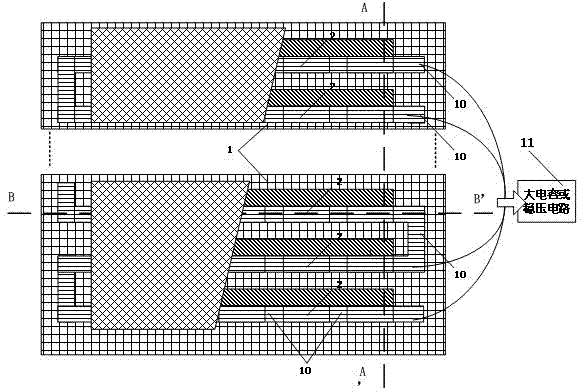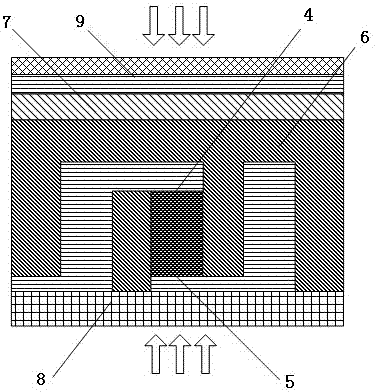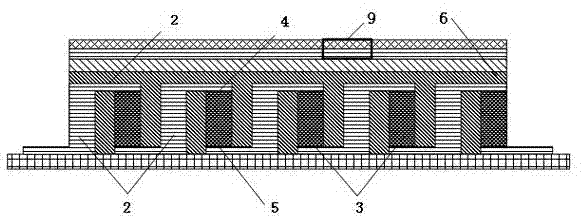Gallium arsenide-based thermoelectric and photoelectric sensor in self-powered radio frequency receiving and transmitting assembly
A photoelectric sensor, radio frequency transceiver technology, applied in the direction of current collectors, electrical components, battery circuit devices, etc., can solve the problems of difficult replacement of batteries, power supply problems, heat dissipation, limited energy, etc., to improve power supply capacity, reduce power consumption, and effectively absorb Effect
- Summary
- Abstract
- Description
- Claims
- Application Information
AI Technical Summary
Problems solved by technology
Method used
Image
Examples
Embodiment Construction
[0013] The gallium arsenide-based thermoelectric and photoelectric sensor in the self-powered radio frequency transceiver assembly of the present invention is composed of a plurality of sensors 1 arranged in parallel, and the sensor 1 is formed by connecting a plurality of thermocouples in series through metal wires 10 . The main part of the thermocouple is composed of the semiconductor arm 3 of N-type gallium arsenide and the metal arm 2 of Au. The N-type gallium arsenide semiconductor arm 3 forms an ohmic contact with the Au metal arm 2 . The ohmic contact near the heat sink plate 7 serves as the cold end 4 of the thermocouple, and the one near the heat conducting plate 8 serves as the hot end 5 . The sensor 1 is based on the gallium arsenide substrate 6, and the gallium arsenide substrate 6 below
[0014] It is a heat conduction plate 8, and the upper layer covers the heat sink plate 7. The gallium arsenide substrate 6 is a supporting material, which plays a role of suppo...
PUM
 Login to View More
Login to View More Abstract
Description
Claims
Application Information
 Login to View More
Login to View More - R&D
- Intellectual Property
- Life Sciences
- Materials
- Tech Scout
- Unparalleled Data Quality
- Higher Quality Content
- 60% Fewer Hallucinations
Browse by: Latest US Patents, China's latest patents, Technical Efficacy Thesaurus, Application Domain, Technology Topic, Popular Technical Reports.
© 2025 PatSnap. All rights reserved.Legal|Privacy policy|Modern Slavery Act Transparency Statement|Sitemap|About US| Contact US: help@patsnap.com



